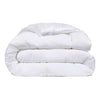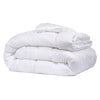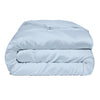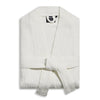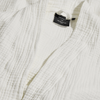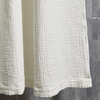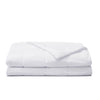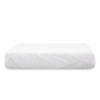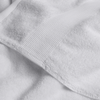The Daily Miracle
Are Dryer Sheets Bad For Your Dryer?
Published
October 18, 2025
Author
Suze Dowling

If you’ve ever found yourself asking, “Are dryer sheets bad for your dryer?” you’re not alone. These sheets are a go-to for many households seeking softer, fresher laundry with reduced static cling. However, their convenience comes with potential drawbacks like residue buildup and its effects on your dryer’s sensors and efficiency. Understanding these trade-offs can help you make informed decisions, protect your dryer from unnecessary wear, and keep your laundry routine hassle-free. Let’s dive into how dryer sheets impact your machine, how to use them safely, and explore effective alternatives for static control.
What Are Dryer Sheets and How Do They Work?
Dryer sheets are disposable or reusable cloths designed to enhance your laundry experience by reducing static, adding fragrance, and softening fabrics. These sheets are coated with softening agents and fragrances that transfer to your clothes during the drying cycle. They work by applying a thin, lubricating layer to fabrics, which minimizes friction and static electricity while making clothes feel soft and smooth. Heat from the dryer activates these components, dispersing a light film on clothes and the dryer drum.
What Are the Benefits of Dryer Sheets?
-
Reduced static cling: Dryer sheets prevent clothes from sticking together—and to you, by cutting down on static electricity.
-
Fabric softening: They coat fabric fibers, making laundry feel softer and more comfortable.
-
Fresh scent: They leave clothes with a clean fragrance that lingers long after drying.
-
Wrinkle reduction: While not a replacement for ironing, dryer sheets help minimize wrinkles during the drying process.
-
Ease of ironing: Softer fabrics with fewer creases make ironing faster and easier.
Are Dryer Sheets Bad for Your Dryer?
Dryer sheets, while convenient, can cause residue to build up inside your dryer over time. The coating from these sheets may accumulate on moisture sensors, potentially interfering with their ability to detect when clothes are dry. This can lead to extended drying times, higher energy use, and added wear on your dryer. Residue can also clog the vent, increasing the risk of overheating. Overusing dryer sheets without regular cleaning makes these issues more likely to affect your dryer’s efficiency.
Do Dryer Sheets Leave a Residue That Impacts Dryer Performance?
Yes, dryer sheets leave behind a film of softening agents and fragrances that can collect on the dryer drum, clothing, and—most importantly—moisture sensors. This residue insulates the sensors, preventing them from accurately detecting moisture levels. As a result, your dryer might run longer than necessary, wasting energy and potentially over-drying fabrics. Over time, this buildup can seriously affect dryer performance, which is why it’s important to perform regular cleanup of your dryer drum and lint trap.
Can Dryer Sheets Interfere with Dryer Sensor Functionality?
Modern dryers use sensors to detect when clothes are dry and automatically stop the cycle. The residue from dryer sheets can coat these sensors, reducing their responsiveness and accuracy. When sensors are blocked by a thin layer of residue, they can no longer sense moisture properly, causing the dryer to overrun and use more energy. Regular cleaning with a gentle solution of vinegar and water can restore sensor accuracy and keep your dryer working as intended.
Are Dryer Sheets Harmful to Dryer Venting and Fire Safety?
Dryer sheets can contribute to lint buildup in dryer vents, which increases the risk of fires. When the residue from these sheets mixes with lint, it forms a flammable coating that blocks airflow. Restricted airflow makes your dryer work harder and run hotter, heightening the risk of overheating. To reduce this hazard, clean your vents frequently and consider switching to alternatives that don’t produce residue, such as dryer balls or laundry detergent sheets, clean options that keep clothes soft and fresh without coating your dryer.
What Happens When Dryer Sheet Residue Builds Up Inside Your Dryer?
Over time, dryer sheet residue can cause multiple problems: inaccurate moisture readings, longer drying cycles, increased energy bills, and faster fabric wear. The buildup may also create lingering odors inside the drum. To prevent this, wipe down the inside of your dryer regularly with a microfiber cloth dampened in mild detergent, vinegar, or baking soda. For a fresher laundry routine overall, pair this with Miracle Made Laundry Detergent Sheets, which clean effectively without the sticky residue left behind by conventional softeners.
Are There Safer Alternatives to Dryer Sheets for Reducing Static?
Yes, several eco-friendly alternatives can help minimize static naturally:
-
Wool dryer balls: These separate fabrics and reduce static while softening clothes.
-
White vinegar rinse: Adding a small amount to your washer’s rinse cycle helps neutralize static and soften fabrics.
-
Line drying: When the weather allows, air drying clothes outdoors keeps them static-free and saves energy.
-
Light sprays or natural softeners: Choose gentle, plant-based fabric sprays or liquid softeners that don’t leave buildup.
If you prefer a simpler, cleaner option, Miracle Made Laundry Detergent Sheets are a great choice. They dissolve completely in water, leave no film on clothes or sensors, and keep your dryer running efficiently.
Can You Clean Dryer Sheet Residue from a Dryer and Restore Efficiency?
Absolutely. Start by unplugging your dryer, then vacuum the lint trap and the surrounding area to remove debris. Mix warm water with mild detergent or vinegar and wipe down the drum, sensors, and seals using a soft cloth to remove any lint and pet hair buildup. For stubborn buildup, a dryer cleaning kit can help remove residue from vents and ducts. Consistent cleaning improves airflow, restores accurate sensor readings, and extends the life of your appliance.
Common Mistakes and Expert Tips for Dryer Maintenance
Ignoring the lint trap: Always clean it after every load to maintain airflow and prevent overheating.
Neglecting the dryer vent: Have it professionally cleaned once a year, or more often if you use your dryer frequently.
Overloading the dryer: Too many clothes restrict airflow, causing uneven drying and higher energy use.
Failing to clean the drum: Wipe it regularly to remove residue from detergents and dryer sheets.
Using dryer sheets too often: Alternate with natural solutions like wool dryer balls or vinegar rinses to protect sensors and reduce buildup.
Conclusion
Dryer sheets can make laundry feel soft and smell fresh, but they come with hidden downsides like residue buildup and reduced dryer efficiency, unlike dryer balls, which can be a more eco-friendly alternative. Regular cleaning, proper vent maintenance, and switching to safer alternatives can help you avoid these issues altogether. For a cleaner, fresher, and more efficient laundry routine, try Miracle Made Laundry Detergent Sheets. They keep clothes soft, eliminate static, and leave zero residue behind.
Sources:
Do Dryer Sheets Help with Static?




